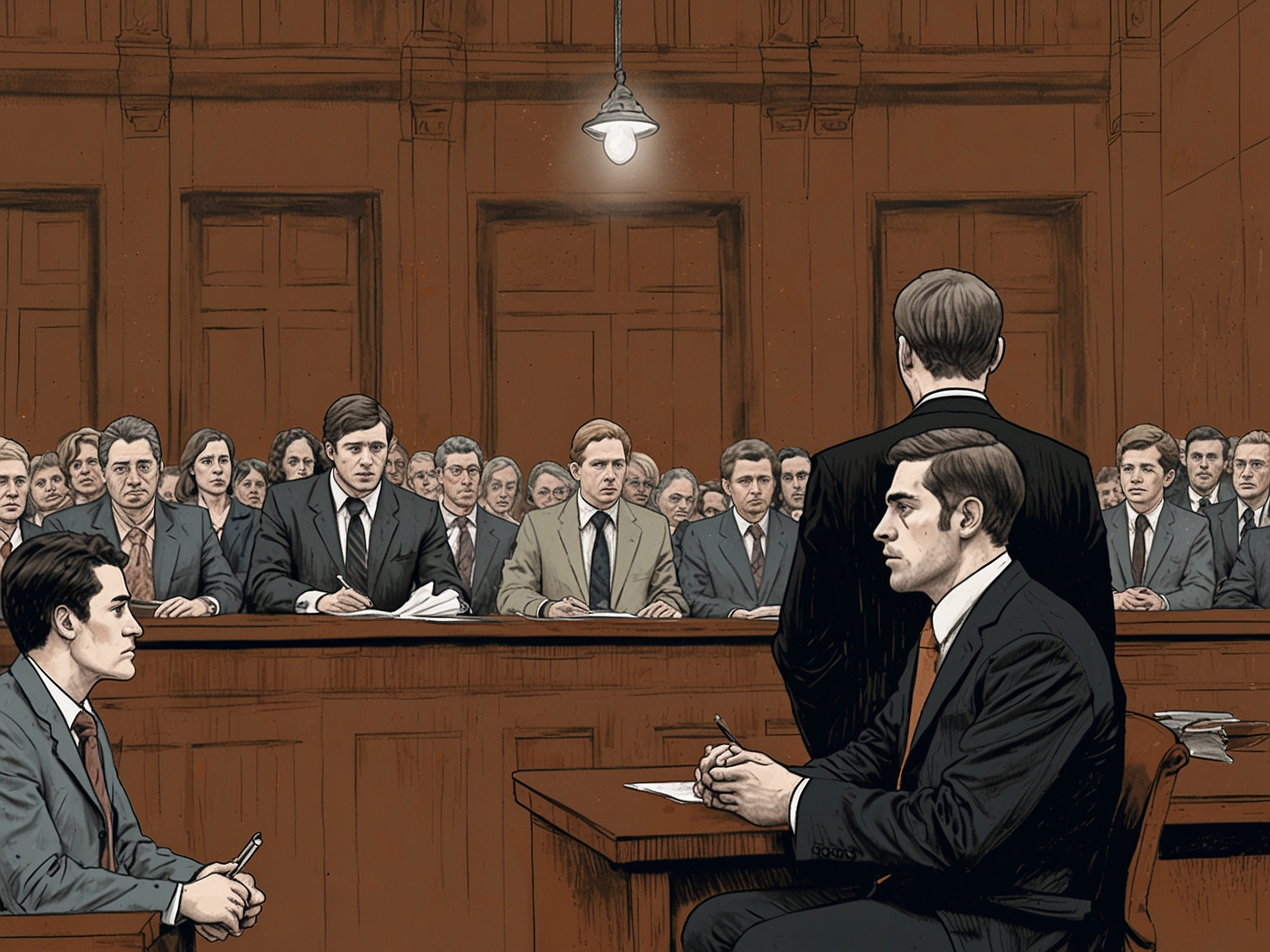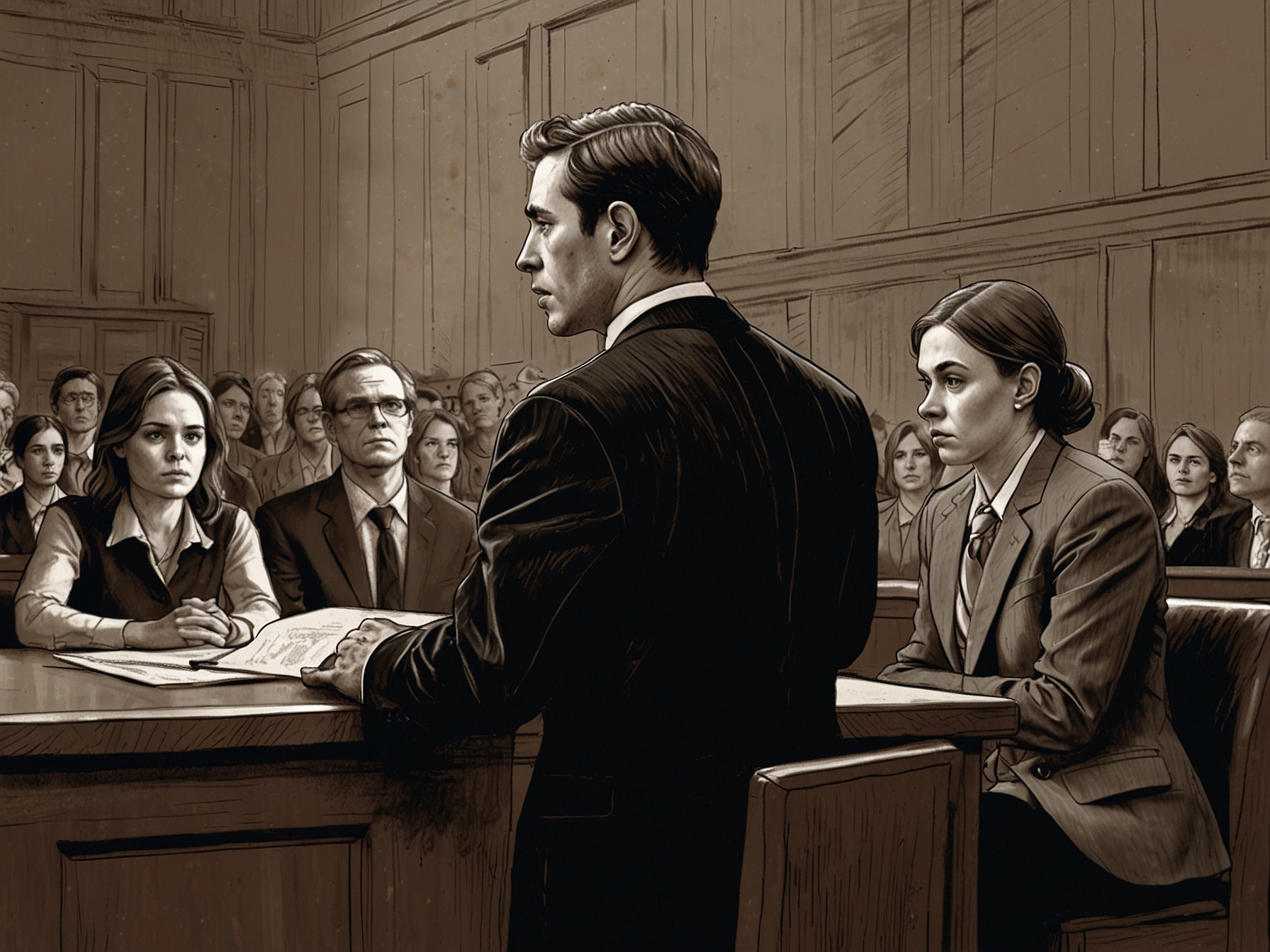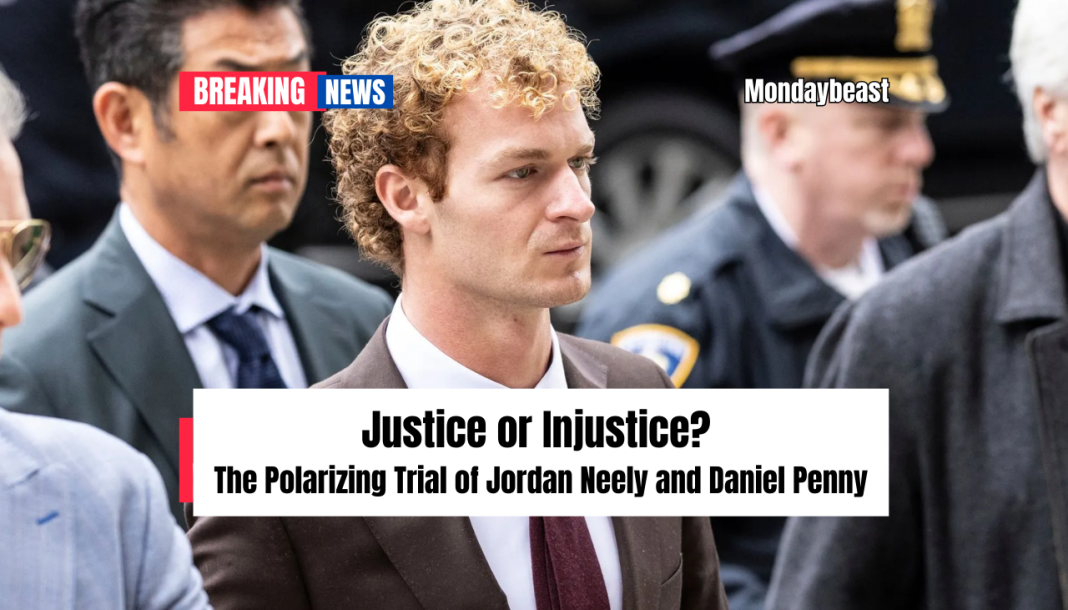The Acquittal of Daniel Penny
Daniel Penny was found not guilty. The decision came Monday after a tense trial. Many expected more. The jury acquitted him of criminally negligent homicide. It was a pivotal moment in a highly charged case. Neely, a 30-year-old homeless man, died on a New York City subway. His death, captured on video, sparked uproar across the nation. The verdict was reached after five long days of deliberation.
Some praised the jury’s decision. It sparked a mix of emotions. Applause erupted but was met with sobs and shouts. Andre Zachery, Neely’s father, was overwhelmed. He was escorted from the courtroom. “This is America. That is the sound of Black pain,” echoed outside. The atmosphere was electric. Chants of “no justice, no peace” reverberated beyond the walls.

The case has polarized New Yorkers and others. Neely was Black; Penny is white. This fact alone fueled heated discussions. Supporters of Penny view him as a hero. They believe he protected fellow subway riders. Critics see his actions as cruel and unjustifiable. The racial divide cannot be ignored, as it adds layers to the story.
The Lead-Up to the Verdict
The trial unfolded as a complex narrative. Manhattan District Attorney Alvin Bragg acknowledged the lengthy deliberations. It highlighted the importance of a jury of peers. It reflected the complexity of the case and its implications.
Neely’s struggles with mental illness were spotlighted. His behavior on the subway that fateful day was alarming. Witnesses described him crying out about his hunger. He stated he wished to return to jail. It painted a picture of desperation and despair. The jury had to weigh his actions carefully.

Before Penny intervened, Neely was in distress. He was ranting but had not harmed anyone. Penny, a former Marine, took drastic action. His chokehold lasted nearly six minutes, prosecutors argued. A medical examiner ruled compression to the neck caused Neely’s death. Events spiraled beyond anyone’s control.
The Tension in the Courtroom
The courtroom felt heavy with tension. Tensions were palpable as the verdict was read. Victories and defeats ebbed and flowed. Those supporting Neely were visibly shaken. The cheer of supporters clashed with the crying from the gallery. It was clear that emotions ran high.
Christopher Neely, Jordan’s uncle, felt let down. He expected at least some form of accountability. “At least give him a charge,” he stated. The notion of no penalties felt like a betrayal. It left many questioning the justice system.

Legal experts weighed in on the case. Supporters of Penny argue he acted out of fear for public safety. They pointed to witnesses describing the chaotic scene. But detractors argued he overstepped bounds. They believed he ignored Neely’s humanity and the right to live.
The Wider Implications of the Case
Discussions about subway safety emerged from this case. Advocates highlighted ongoing issues related to homelessness. Society grappled with mental health awareness. Jordan Neely’s case became a focal point. It sparked vital conversations nationwide.
Public figures voiced their opinions. Some praised Penny’s actions. Others accused him of murder. Vice President-elect JD Vance commended the verdict. This highlights varying viewpoints on civilians’ roles in public safety. Clearly, there’s no consensus on how to navigate these complex waters.
The juxtaposition of opinions showcases societal rifts. It’s fascinating to see how instant reactions to such cases can shape understanding. Many voices were raised. A loud chorus of “justice” was demanded by supporters. Yet, reflections on Neely’s life and struggles remained. It begs the question: what are we willing to ignore in our pursuit of safety?
The Aftermath and Continuing Debates
The aftermath remains fraught with tension. A civil suit against Penny is on the horizon. Neely’s family is pursuing justice in a different arena. They hope for recognition of their pain. Can civil courts offer closure where criminal justice has failed?
Debates reached beyond the legal realm. Policy implications were considered. How do cities manage homelessness and mental illness? Many question if we are doing enough. Political leaders discussed the need for systemic changes. This case may become a catalyst for such reforms.
As these conversations unfold, they evoke strong emotions. The legacy of Jordan Neely reminds us. Lives lost shouldn’t be forgotten or reduced to statistics. Will meaningful changes arise from such tragedies? Only time will tell, as the wounds remain fresh.




